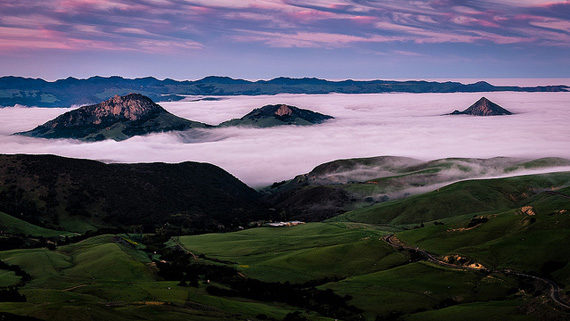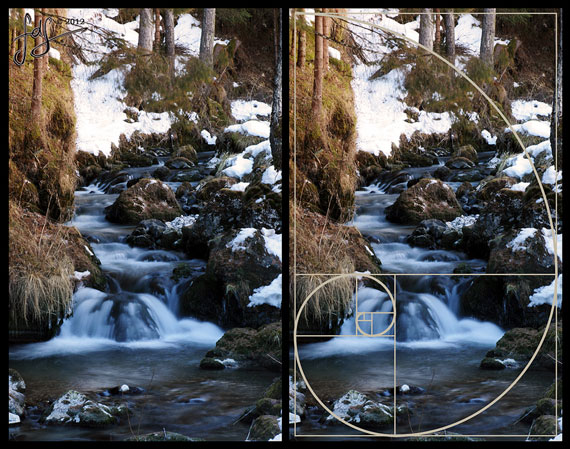As photographers, it’s really important to know what makes a strong photograph. There are a lot of things you should keep in mind when shooting, like color, lighting, shape, and composition. It takes a variety of aspects to create an exciting image, but if you are looking for one aspect that can really help improve the quality of the composition of your photographs, the golden ratio is definitely a worthwhile concept to understand.

Photo by Malcolm Carlaw; ISO 100, f/4.0, 1/80-second exposure.
What is the Golden Ratio?
So what exactly is the golden ratio? In simple terms, it is a mathematical constant that appears repeatedly in nature and artwork. Yup–believe it or not–math is really important when creating quality art. To construct a golden rectangle, choose a number that will be the length of the rectangle’s short side. For the sake of this illustration, let’s say 500 pixels. Multiply that by 1.618. The result, 809 pixels, is the length of the long side of your rectangle. Therefore, a rectangle that is 500 pixels by 809 pixels is a golden rectangle. It obeys the golden ratio.

“Untitled” captured by FDS Art (Click image to see more from this photographer.)
The Rule of Thirds
If numbers aren’t your favorite thing in the world, you can always use the rule of thirds and a grid to utilize the golden rule. The rule of thirds governs the placement of points of interest in your image. Basically, divide your image into three equal sections, horizontally and vertically, so that you have a grid over your image. This should create total of nine boxes with the lines intersecting at four points. According to the rule of thirds, the points at which the lines intersect are the ideal places for points of interest.

“Rule of Thirds Showcase” captured by What’s That Picture (Click image to see more from this photographer.)
Using either of these formulas will help you in creating interest in your images. Our eyes have a tendency to follow leading lines or look at an image a certain way. By utilizing these formulas, you’ll notice that your subject will often end up being placed somewhat off center–to the left or the right–and often higher and lower in the frame, as well. That’s not to say a centered image can’t be visually pleasing, but following these guides can help you create a much more exciting image.
So if you understand how the rule of thirds and golden ratio work, you will easily be able to create strong images that captivate your viewer. Our eyes tend to like images in certain ways, and by following these guidelines, you’ll help lead the viewer’s eye around your image, absorbing the details you want them to see and creating a strong visual impact.
About the Author:
Stephanie lives in Central, Illinois, is married to her best friend, Ryan, and enjoys the company of her rambunctious lab-beagle pup, Kit. She is the owner of Green Tree Media (greentreemediaonline.com) and is passionate about photography.
Like This Article?
Don't Miss The Next One!
Join over 100,000 photographers of all experience levels who receive our free photography tips and articles to stay current:






How does the golden ration relate to the law of thirds? Is the law of thirds just a simplified version? What about the golden triangles?
I think it is difficult to apply it in the field if you want to be more precise with mathematics and all !..
Unfortunately, the article does not talk about field practice to achieve golden ratio? or I missed it. It suits more in post production. To me, Golden Ratio can be better achieved in post production. Also it looks like it converges to rule of thirds which is more practicable to achieve in the field….
It is also very advisable to know composition rules in order to break the.